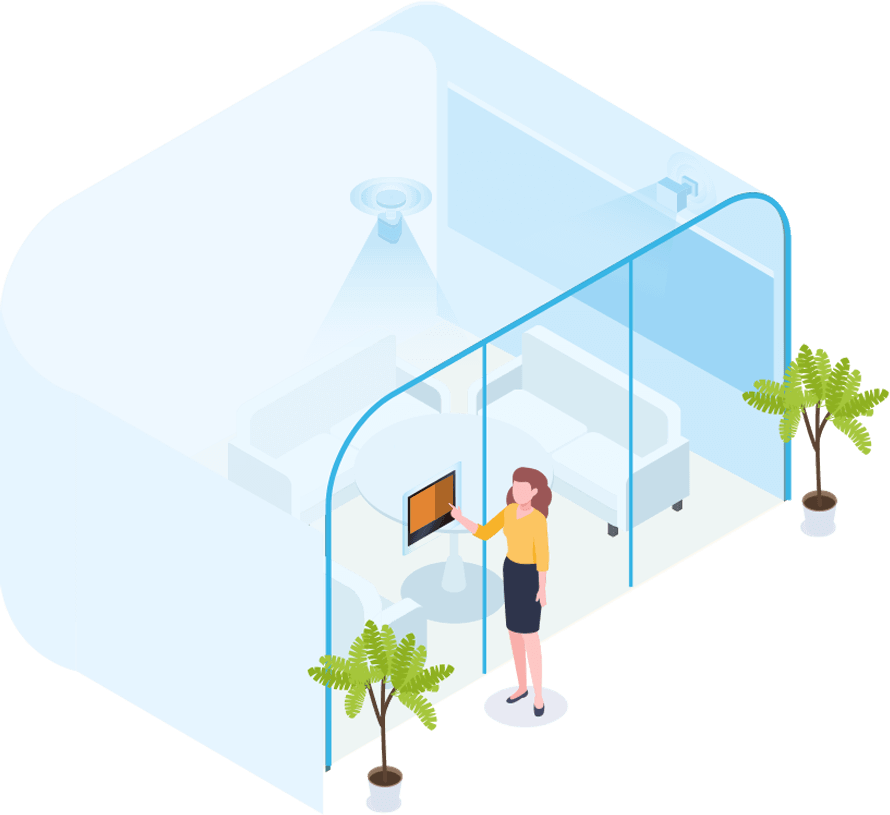Workplace Analytics
What is
workplace analytics?
Workplace Analytics is a combination of data collection and analytics tools that help businesses uncover patterns around workplace usage and make targeted improvements. It involves gathering data from both internal and external sources, and transforming it into valuable decision-making information. A set of employee behavioral and environmental metrics are often used in Workplace Analytics to support business decisions on all levels, including workspace planning, resource allocation, team modeling, etc.
The benefits of
workplace analytics?
One typical application of workplace analytics is on workspace scheduling. It lets you understand how different spaces (including meeting rooms, desks, or any other spaces) in your office are utilized and re-arrange it for the better. It comes in handy with the following applications.
Balance your inventory of different space
Quickly understand which rooms or desks are overbooked or underbooked and determine if you have enough of meetings room and shared desks, and if they are of the right size and in the right locations.
Track space usage efficiency
Discover if a space is fully utilized by your employees for the time they reserved. Drive comparative analysis between the reservation time versus actual usage time, the reserved space capacity versus actual participant number.
Reduce no-shows and squatting
Significantly reduce ghost booking where no one shows up and recapture unused space. This often works with workplace technology like occupancy sensor, which collects space occupancy data in real-time to automatically free up vacant space.
Plan for the future & better ROI
Track space utilization trends over time and make data-driven decision to scale up and down your meeting room/desk number and capacity, which helps cut down costs on real estate investment and brings greater returns on investment.
Workplace analytics
in Yeastar Workplace
Solution
Yeastar Workplace offers quantifiable metric tracking and analytics when it comes to meeting room booking behavior and room utilization optimization. These metrics include:
Meeting Behavior
Including total meetings and meeting length per day, week, or a custom time period.
Meeting Event Density
The percentage of occupied meeting rooms during a given time period, which reflects the busiest time of day or date when rooms are hard to book.
Room Utilization Rate
A graphical presentation of how much your rooms are used compared to the total available time. Around 70% occupancy level is considered an ideal utilization.
Recaptured Time
Illustrating how much of the time saved from early-ended or no-shows meetings.
Meeting Types
A comparison between the planned meetings and ad-hoc meetings. It helps you find out which type prevails and the percentage.
Unattended Ranking
A ranking of employees based on their records of unattended reservations (including the cases of forgetting to check-in/end their reservation).
Featured Solution
Related Terms
It shouldn't be difficult to book the right space.
Let us help!



